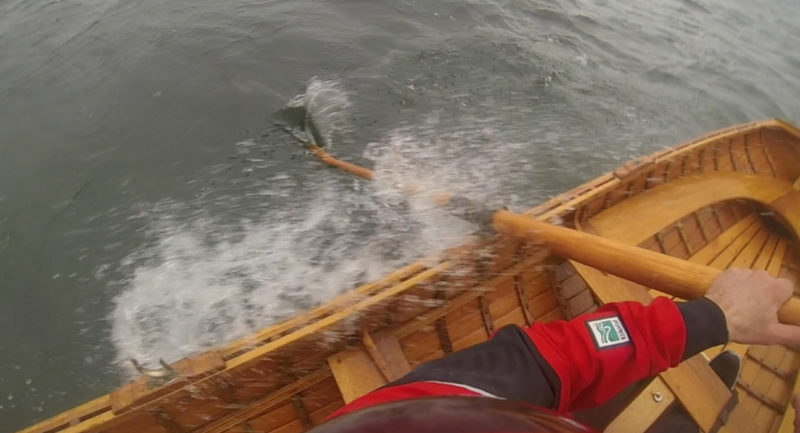 Christopher Cunningham
Christopher CunninghamLowering the centerboard and “tacking” can make rowing to weather easier than fighting the wind head on.
When comparing rowing and sailing strategies for an oar-and-sail boat, it is easy to assume that rowing a direct leg upwind might prevail over a sailing a zigzag course to weather. Fighting for the short, straight line with oars makes sense. But does it always?
When I want to go rowing, wind is not usually a deterrent. A good stiff row is sometimes just what the doctor ordered. I have dealt with strong headwinds, and while feathering the oars helps to a point, and adrenaline does wonders, a couple of years back I got stopped dead in my tracks. Mind you, this was merely a day outing with plenty of residences and docks lining the lakeshore, nothing terrifying or life-threatening, but the wind piped up on the nose with an unexpectedly strong punch and brought my 16’ sail-and-oar boat to a standstill.
After a determined effort got me nowhere, I tried something different, something I had read about and dismissed: I lowered the centerboard and began tacking upwind while rowing.
As soon as I bore off, the motion of the boat eased. With the influence of the centerboard, the boat settled on its own heading and everything became easier. The oars were not laboring directly against a headwind. The boat heeled a little bit from the force of the wind, but this was not a hindrance. I made steady progress to windward with a relatively relaxed stroke. It took a few hard pulls to bring the bow across while I was “short-tacking,” but that was nothing compared to beating my brains out directly against the wall of the wind. I could have carried on like this for some time.
On another occasion I was rowing upwind with the centerboard down and matched tacks, with a close-hauled 25′ sailboat, and we reached our common destination at about the same time. I don’t think the other skipper was greatly experienced and could have made better speed, but the wind that day was quite strong and my unwitting competitor did, by and large, keep his sails filled. On another day out in the wind I traded a couple of tacks with a fast-looking 30′ sloop. He was pushed over hard a couple of times and was probably making 6 knots against my 2, so there was no pretense of keeping up, but what struck me was that we seemed to take very similar headings on our respective tacks.
In more moderate conditions I will row straight away to windward without the added drag of the centerboard, making perhaps a couple of knots. I can take a break and bear off, at which time employing the board will dramatically reduce leeway. I don’t make much more speed and eat up far more ground, but rowing is relaxed. The reduction in leeway seems worth the additional wetted surface and drag of the board.
This business of tacking with the centerboard employed while rowing seems to work best with a whole lot of wind. This could be useful if you’re trying to get to weather under sail and are overwhelmed. When my 16-footer is reduced to three reefs, the ability to work to windward is greatly hampered if not eliminated, and skating on the edge of a knockdown is not fun. When I bear a few degrees off rowing into a strong headwind, the boat pounds less as the waves are quartered rather then met head-on. But without a centerboard or a daggerboard, most boats will make a lot of leeway. Lowering the board will eliminate leeway, dampen the roll, and bring the boat up closer to the eye of the wind rather than beam-to or worse.
Carrying on with the oars, the sensation is similar to that of being under sail. Some of the forces at work under sail seem to be at work here. In my experience, eliminating leeway is not a dramatic enough description for what is occurring when tacking under oars into a strong wind. There may be more at work than greater directional stability with the board down. I suspect lift is being generated. Rowing straight into the wind, the board will have no angle of attack and so would generate no lift, but bearing off, the hull slips sideways to some degree; coupled with forward motion, the centerboard would have a positive angle of attack and create lift.
Exactly how and when a centerboard becomes of benefit to the rower will vary with every boat and skipper. But there is no question in my mind that when the wind pipes up, the centerboard represents another tool in the rower’s quiver. Rather than turning away and retreating, forward progress might still be possible.![]()
Eric Hvalsoe of Hvalsoe Boats builds and restores boats in Shoreline, Washington, and cruises the waters of the Salish Sea. He wishes to thank to Ian McColgin for “this crazy idea.”
You can share your tricks of the trade with other Small Boats Monthly readers by sending us an email.
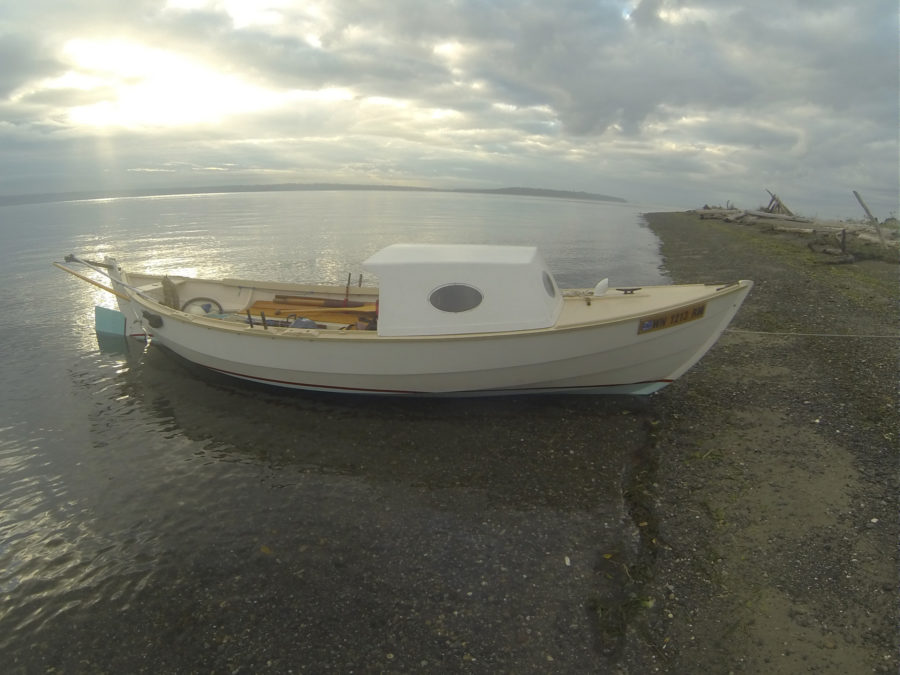
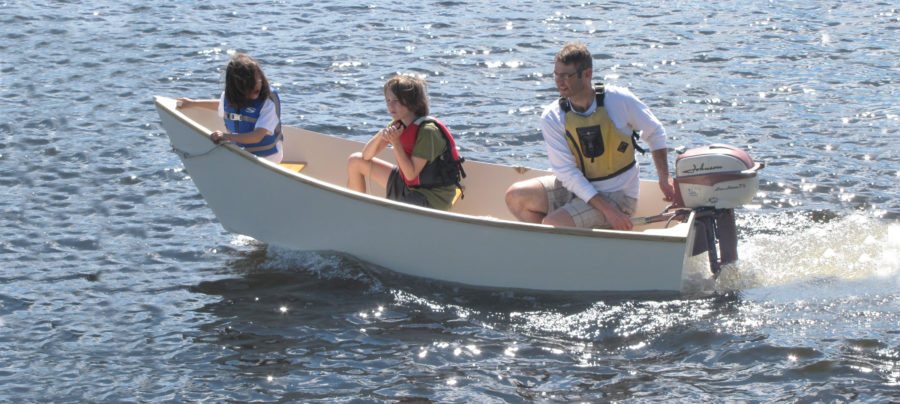
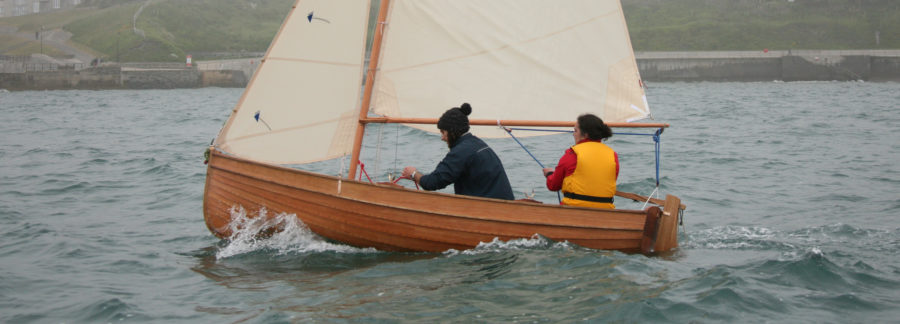
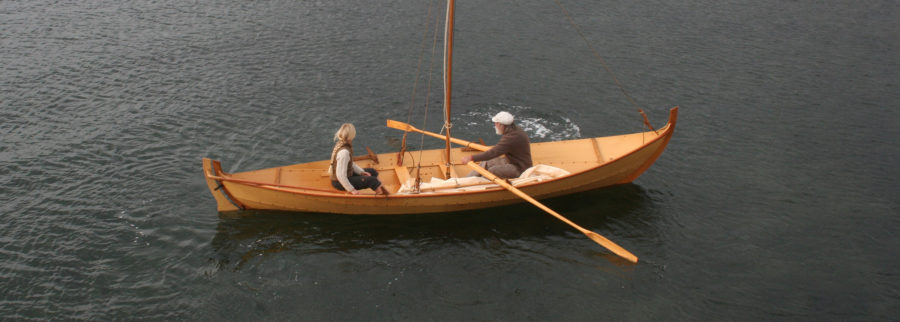
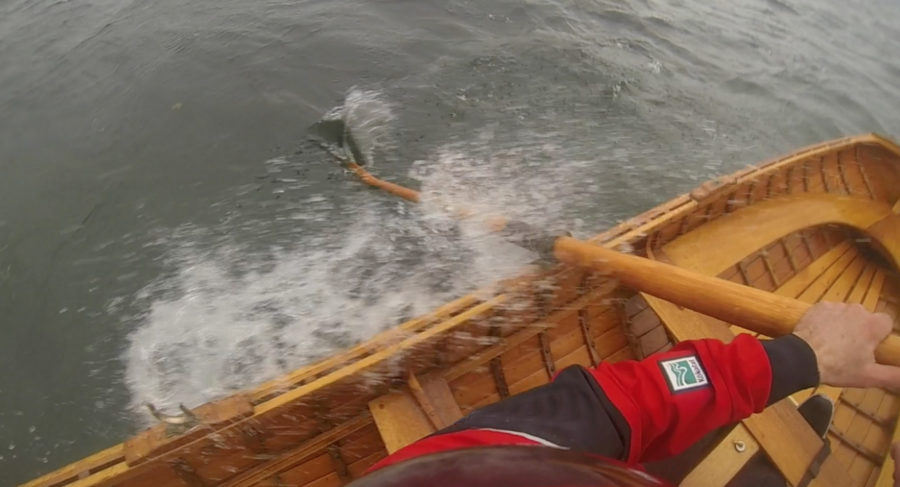
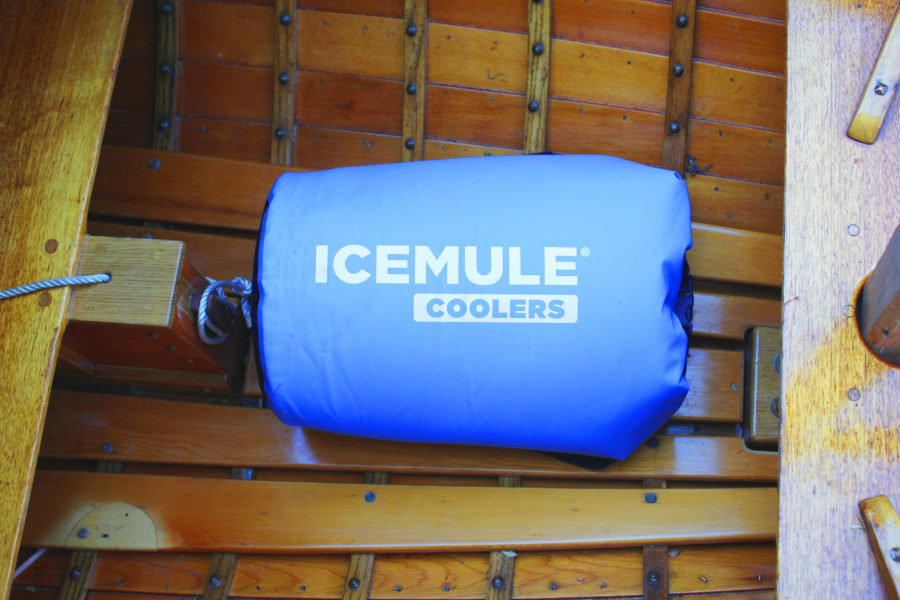
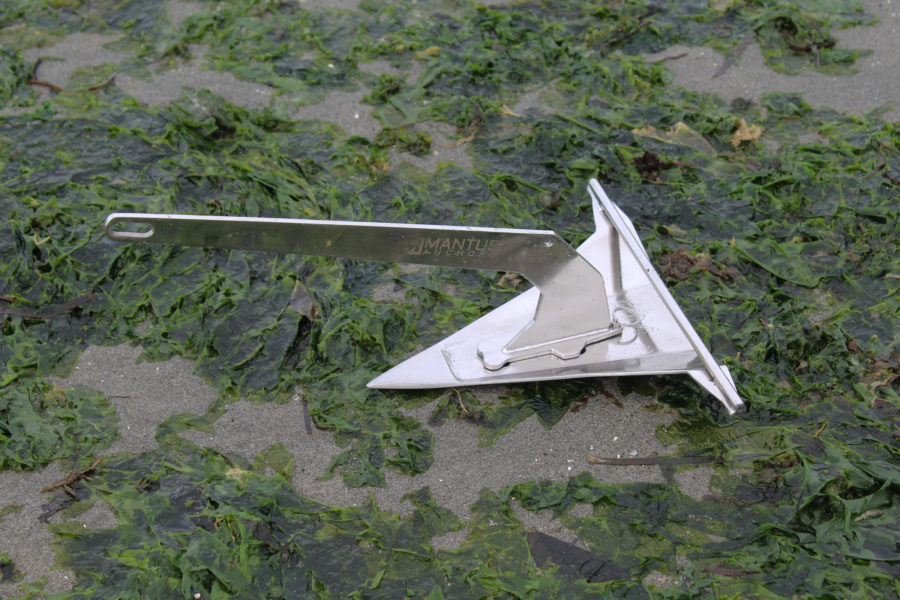
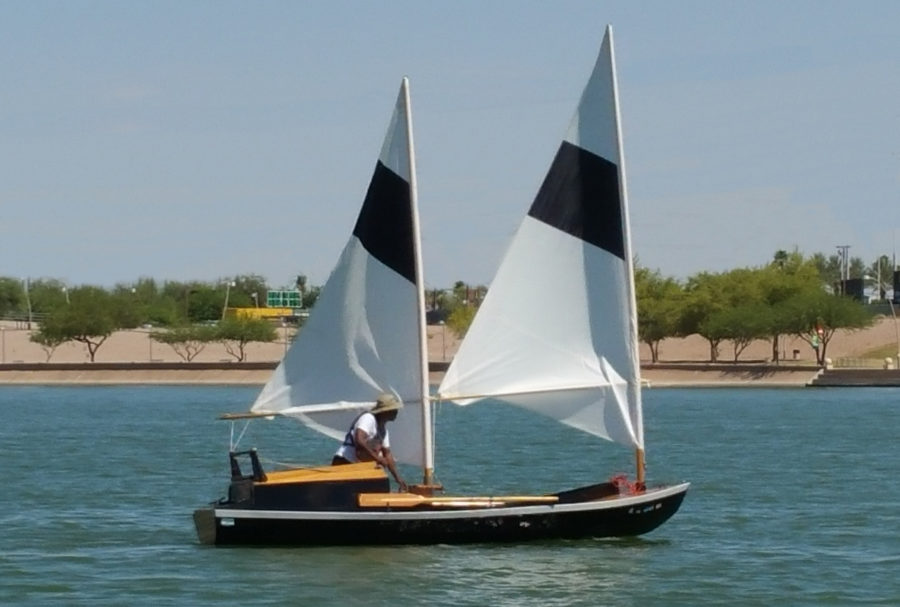
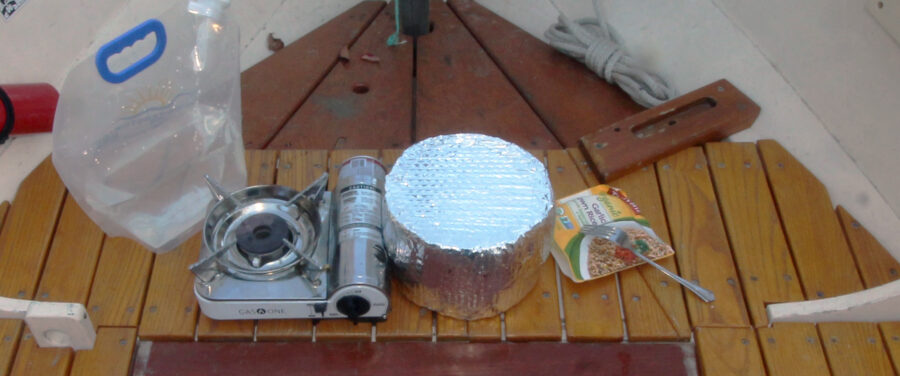
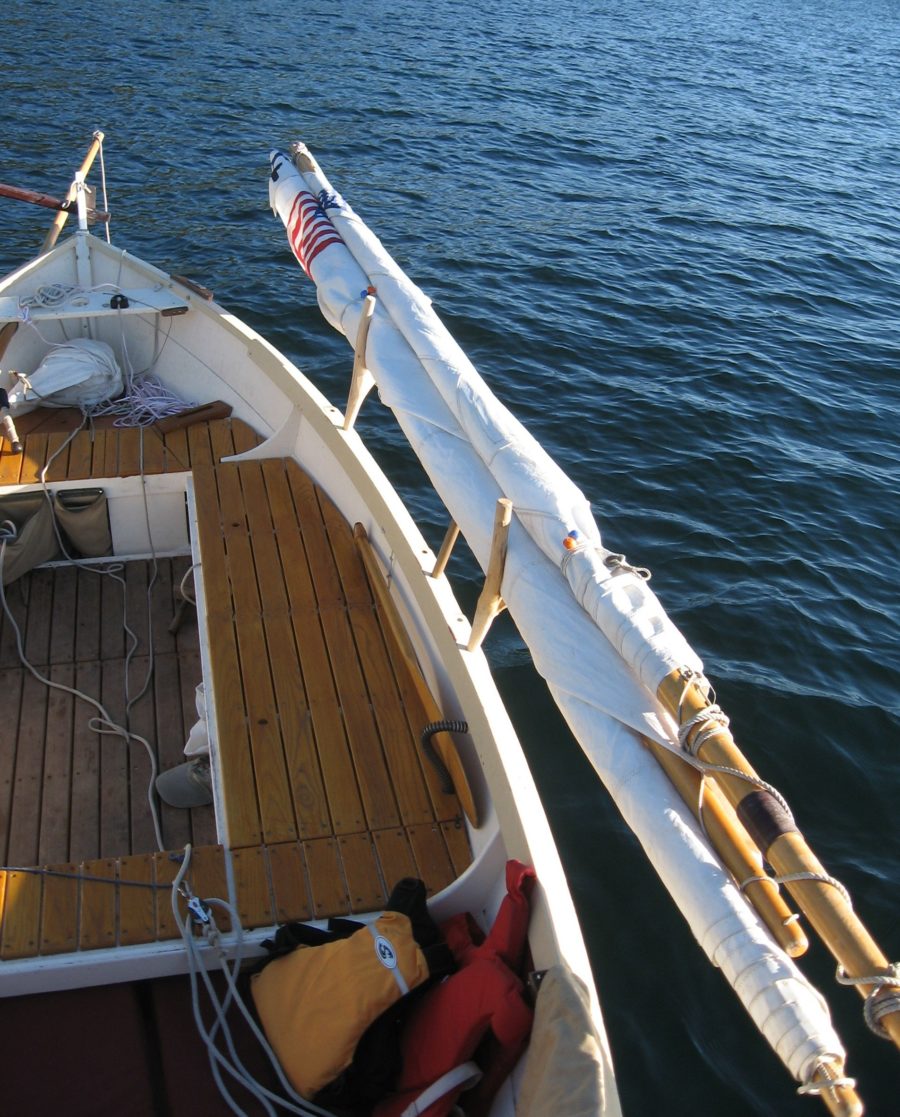
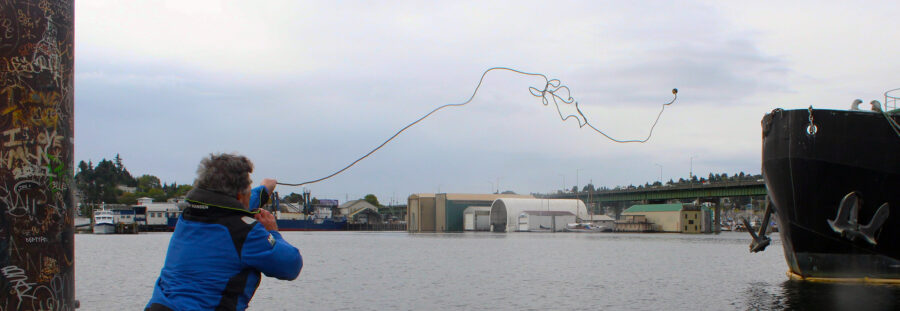
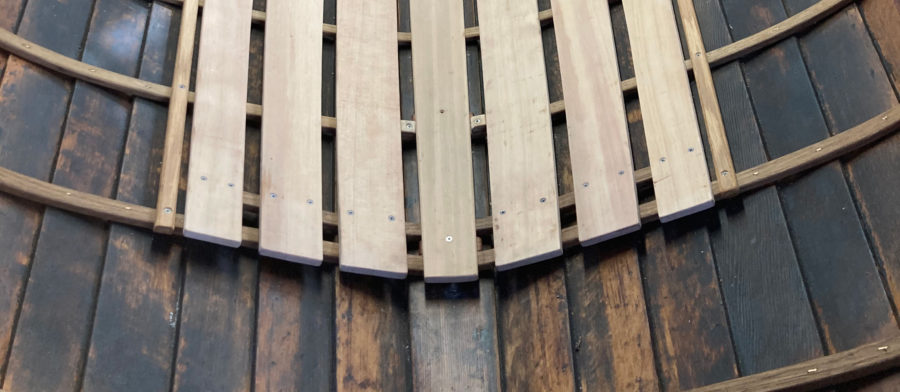
Well, heck. It looks like I’ll have to incorporate a modified centerboard, along with a trim rudder on my rowing boats. Dropping the centerboard (or a lee board on a dory) in a stiff headwind makes perfect, intuitive sense. Great info!
Never even thought to try that in my Whitehall. I will reinstall the centerboard next season and give it a shot. I deal with going upwind by shifting to the front station, raising the stern a bit to produce weather vane effect to keep bow from falling off. Makes a huge difference.
When paddling a canoe against strong headwinds the same results are accomplished by quartering into the wind. Both overall speed increased and effort reduced.
The expedition rowing craft vaguely forming in my mind includes a board or foil of some sort. It also includes flexibility in large or small increments for rowing position, and/or easily adjustable and secure trim ballast.
I do not bring the rudder along for my heavy-wind rowing forays. Not sure the payoff is there. You definitely feel the drag of these appendages, but the centerboard seems to be helpful as I have described.
Good advice from experience, Eric. My rowing Walkabout is easiest “tacked” into winds over 20, but it takes effort at the oars to keep on track and the keel-less bottom tends to slide off to lee. I put off making a rowing leeboard after experiments showed it was not much help “parking” in high winds (really need the drogue for keeping bow to wind), but will try it again as an aid to rowing. Thanks for the article.
Any details on what you are imagining for an expedition rowing craft? That is intriguing…